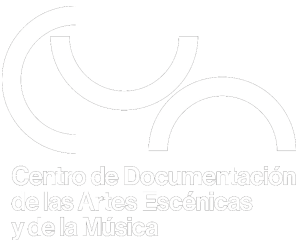Villancicos from Mexico City for the Virgin of Guadalupe DAVIES, Drew Edward
Tipo de material: ArtículoDetalles de publicación: 2011: Oxford University Press, London; Oxford
En: Early Music Vol. 39, núm. 2,May. 2011, p. 229Resumen: RESUMEN: In 17th century Latin America, devotions concerned with New World topics asquired literary, visual and, to a lesser extent, musical traditions by means of troping, glossing, copying and reinventing European source material. The most prominent of these devotions in New Spain was the Virgin of Guadalupe, whose miraculous apparitions of 1531 near Mexico City began to be related to a wider public in the late 1640s through printed texts. A small but significant repertory of villancicos for the Virgin of Guadalupe survives at Mexico City Cathedral and illustrates the application of New Spanish litarary tropes of the Guadalupe story to 1690s cathedral music. This essay contextualizes the Guadalupan pieces within the larger Mexican villancico repertory and considers the dialogue between the local and the transatlantic in the proess of building a new musical repertory for the Virgin of Guadalupe´s feast-day. It shows how composer Antonio Salazar adapted the European "battle" tradition to Guadalupan villancicos in order musically to represent her iconography, which os based upon that of the woman of the Apocalypse and discusses how villancico poets refashioned the Guadalupe stoty according to classical Roman mythology and Old Testament images. In so doing, it stresses the creative ways in which European aesthetics were adapted to New World topicality to meet local religious needs. Keywords: colonial Mexico, New Spain, villancico. Antonio Salazar, Manuel de Sumaya, Virgin of Guadalupe.
ArtículoDetalles de publicación: 2011: Oxford University Press, London; Oxford
En: Early Music Vol. 39, núm. 2,May. 2011, p. 229Resumen: RESUMEN: In 17th century Latin America, devotions concerned with New World topics asquired literary, visual and, to a lesser extent, musical traditions by means of troping, glossing, copying and reinventing European source material. The most prominent of these devotions in New Spain was the Virgin of Guadalupe, whose miraculous apparitions of 1531 near Mexico City began to be related to a wider public in the late 1640s through printed texts. A small but significant repertory of villancicos for the Virgin of Guadalupe survives at Mexico City Cathedral and illustrates the application of New Spanish litarary tropes of the Guadalupe story to 1690s cathedral music. This essay contextualizes the Guadalupan pieces within the larger Mexican villancico repertory and considers the dialogue between the local and the transatlantic in the proess of building a new musical repertory for the Virgin of Guadalupe´s feast-day. It shows how composer Antonio Salazar adapted the European "battle" tradition to Guadalupan villancicos in order musically to represent her iconography, which os based upon that of the woman of the Apocalypse and discusses how villancico poets refashioned the Guadalupe stoty according to classical Roman mythology and Old Testament images. In so doing, it stresses the creative ways in which European aesthetics were adapted to New World topicality to meet local religious needs. Keywords: colonial Mexico, New Spain, villancico. Antonio Salazar, Manuel de Sumaya, Virgin of Guadalupe.
RESUMEN: In 17th century Latin America, devotions concerned with New World topics asquired literary, visual and, to a lesser extent, musical traditions by means of troping, glossing, copying and reinventing European source material. The most prominent of these devotions in New Spain was the Virgin of Guadalupe, whose miraculous apparitions of 1531 near Mexico City began to be related to a wider public in the late 1640s through printed texts. A small but significant repertory of villancicos for the Virgin of Guadalupe survives at Mexico City Cathedral and illustrates the application of New Spanish litarary tropes of the Guadalupe story to 1690s cathedral music. This essay contextualizes the Guadalupan pieces within the larger Mexican villancico repertory and considers the dialogue between the local and the transatlantic in the proess of building a new musical repertory for the Virgin of Guadalupe´s feast-day. It shows how composer Antonio Salazar adapted the European "battle" tradition to Guadalupan villancicos in order musically to represent her iconography, which os based upon that of the woman of the Apocalypse and discusses how villancico poets refashioned the Guadalupe stoty according to classical Roman mythology and Old Testament images. In so doing, it stresses the creative ways in which European aesthetics were adapted to New World topicality to meet local religious needs. Keywords: colonial Mexico, New Spain, villancico. Antonio Salazar, Manuel de Sumaya, Virgin of Guadalupe.
No hay comentarios en este titulo.

